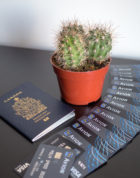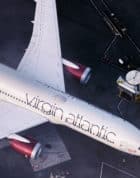I spend a lot of time planning trips and figuring out how I want to redeem my points, and when doing so, I rely on many instincts and thought processes that I’ve gained through years of booking award travel. This is a skill best learned through experience, so while these instincts might come naturally to me, they might not be obvious to someone who’s just starting out.
In this post, I wanted to go over some of these strategies, particularly in the context of finding alternatives when your initial plans don’t quite work out – something that any seasoned award booker will tell you is a routine circumstance in this game we play.
The trip I’ve been planning recently is for the upcoming New Year’s Eve and early January 2019. As many of you know, conventional wisdom dictates that you should make your award bookings about 9-12 months in advance to capture the best availability, especially for peak travel times like the summer and winter holidays. For example, last year, I had booked my Christmas trip to Bali about nine months before departure, in the month of March.
This year, we were hoping to return to South East Asia, but I somehow never got around to looking at flights until now, when most of the availability had pretty much dried up. It was therefore quite a challenging process, and I’ll be drawing upon that experience in this post (without going into too much detail of course; I’ll save that for when the trip itself comes around).

Langkawi, Malaysia
Plan A: The “Perfect” Award
There’s no doubt a certain elegance about award itineraries when everything you want falls exactly into place. An Aeroplan Mini-RTW with the three stops maximized in your ideal destinations – oh yes. Long, comfortable intercontinental flights in cutting-edge business class seats – boo yah. Crisp layovers of exactly 24 hours in duration – boom! And $0 in carrier-imposed surcharges – *ahhhhh*.
Of course, you can only expect to locate the availability for such a “perfect” award itinerary if you’re planning the trip almost a year ahead. Otherwise, the most desirable flights will get booked up by other travellers, and by the time you’re within six months of the date of travel, you’re left with pretty slim pickings.
If that’s your situation, Plan A simply isn’t going to work out. But that’s why you need to have a Plan B – and if you’re looking to travel over peak season, a Plan C, Plan D, etc. We always say that “flexibility is king” when redeeming points, but there are many types of flexibility that you can employ…
Plan B: Look Into Other Points Programs
When you spend so much time working with a single points program, you can often get tunnel vision and forget about the other options out there. For us Canadians, Aeroplan would be the preferred program if we’re looking to traipse around the world, whether that’s in economy class or premium cabins.
But there’s several other programs that we have access to – Alaska Mileage Plan and British Airways Avios have their own credit cards here, while Delta SkyMiles and Etihad Guest are transfer partners of Amex MR, and you never know when they might come in handy.
Furthermore, Marriott’s hotel loyalty program is partners with 40+ other airlines, so you could leverage those points to access American AAdvantage, United MileagePlus, Aegean Miles+Bonus, etc.
Example: After a first-pass look at Star Alliance options to South East Asia turned up no results in either direction, I checked the Alaska website to see if there was any space on Japan Airlines, as well as the Avios website to search for Cathay Pacific.
I found two business class seats on JAL’s flight from Boston to Tokyo on Boxing Day, but unfortunately every flight onwards to South East Asia – whether it was Kuala Lumpur, Singapore, or Jakarta – had no space at all throughout the festive season.
Nevertheless, it was still worth a look, since I definitely would’ve taken a Tokyo stopover together with two very comfortable flights in JAL business class, had they been available.

Japan Airlines business class
Plan C: Take What You Can Get… For Now
Decide for yourself whether you’d still like to go on this trip even if it isn’t the “perfect” award itinerary as outlined above. The answer is likely yes – after all, having the very ability to travel is nothing short of a blessing, and you can’t let a few awkward overnight layovers and angled-flat business class seats stop you from seeing the world.
In that case, one of the approaches you could take is to forget about the “perfect” options and simply book whatever you’d be satisfied with for now. The truth of the matter is that business class is a pretty standardized experience across most airlines these days – you’ll get a lie-flat bed, a nice meal, a bit of pampering, and you’ll get off the plane feeling decently well-rested.
So while something like EVA Air business class might stick out in the memory for longer, the business class experiences on Ethiopian, EgyptAir, Air India, and Air China aren’t going to kill you either – after all, it’s still worlds apart from economy class.
Example: Going back to the Aeroplan search engine, I realize that there’s virtually zero transpacific availability on my return date on any flights except for a handful of Air China flights out of Beijing. Now, Air China doesn’t have the best reputation among Star Alliance carriers, but they have lie-flat seats, and their route to Montreal is operated by a swanky Boeing 787 Dreamliner.

Air China 787 business class
Since my only other option would be to downgrade to economy, I’m going to let go of any aspirations of EVA, ANA, and Singapore Airlines for now, and take what I’ve got. I can always pay the change fee later on if any optimal routings do appear.
In addition, to get from Singapore to Beijing, I had to accept a mixed-cabin option with a Singapore Airlines flight in economy class. With the “take what I can get” attitude, I went ahead and booked this, since there were really no other alternatives available, and I can always upgrade a mixed-cabin segment for free if space were to open up later. I’ve set up an ExpertFlyer alert to let me know if it ever does.
Plan D: Mix Up Your Destinations
If a certain plan isn’t working out, ask yourself whether that plan is really set in stone or whether you can mix things up a bit. Sure, you may have picked out your desired destinations, but a bit of flexibility would go a long way towards overcoming any troubles caused by a dearth of award space.
Perhaps you could travel to your chosen destinations in a different order – if you originally planned to do a westbound Mini-RTW incorporating Europe and Asia on your way to Australia, you could look into doing Australia first, then Asia, then Europe.
Alternatively, you could add a stopover somewhere (if you haven’t used up the allowance already) to split up the journey and save yourself from a potentially back-breaking series of long-haul flights.
Example: We want to depart for South East Asia after spending Christmas at home, and I was able to find a few options leaving on Boxing Day, but they weren’t pretty.
I’m talking about a 12-hour Chicago layover, followed by an Asiana flight to Seoul, then another 10-hour layover, then an economy class jaunt to Shenzhen arriving at 1am, a brutal overnight, and a flight to Singapore at 12pm the next day. Gross!
So instead, I looked at options routing from Toronto to Singapore via Europe. Then I thought, why not break up the journey in Europe and spend New Year’s Eve in Paris, before flying onwards to South East Asia?
Indeed, I was delighted to find some space to Paris on TAP Portugal business class. After that, award space between Europe and Asia tends to be easier to locate than transoceanic flights, mostly thanks to the vast route network of Turkish Airlines out of Istanbul.

Plan E: Maximize Your Layovers
Most travellers despise layovers, but here in the points world we adopt a different view, as we know that layovers can be stretched to as long as 24 hours in order to make time for some meaningful sightseeing and break up the journey a bit.
So if the Aeroplan search engine gives you a routing with an annoying 7-hour layover, you might wish to see if you could take an earlier departing flight and make that 23-hour layover instead. Then you’d have time to catch some rest at a hotel, go out and explore the city, and add a new dimension to your trip.
Even if you can’t stretch the duration of the layover, you could do some additional research and see if there’s any fun things you could do during your brief time on the ground, such as catching up with a friend who lives there or exploring the small towns around the airport (Kloten and Narita are two such examples).
Example: Lisbon is one of our favourite cities, and Jessica and I have fond memories of the time we spent there while backpacking through Europe many years ago. Therefore, our TAP Portugal flight to Paris presents the perfect opportunity to schedule a long layover in Portugal for some bacalhau and pastéis de nata.
Then, on our way back from Singapore, the only way to connect to our Air China flight would be to have a 6-hour layover in Beijing. While six hours wouldn’t normally be enough to do anything, it’s certainly enough to grab a big breakfast with my family in Beijing and catch up with them, however briefly, before I jet off again.
Keep in mind that this won’t always play out so well – I also have a very awkward 10-hour layover in Istanbul on this trip. The layover is from 5pm to 3am, so while that’s a lot of time to spend sitting in the lounge, it’s also far from ideal for going into the city. To be honest, I have no idea what I’m going to do!

Turkish CIP Lounge, Istanbul
Plan F: Connect the Dots with Other Flights
If the award availability gods aren’t favouring you, you can always put your faith in the world’s low-cost carriers to help get you around.
Europe and Asia in particular are flush with these airlines, which represent easy, cost-effective ways to shuttle around between major cities and tourist destinations. While the flights themselves probably won’t be as good, you can often score deals as low as $30 for a three-hour flight, and at that price point there’s really not much else that needs to be said.
In Europe, your prime candidates would be Ryanair, EasyJet, Vueling, and Wizz Air; in Asia, Scoot, AirAsia, Jetstar, and Thai Lion. In the event that the major carriers aren’t playing nice with award space, these nifty little airlines can help you bridge the gap from a major regional hub to your final destination.
Example: In South East Asia, we’d like to go back to Bali for a bit, as well as spend some time in Singapore (a no-brainer after seeing Crazy Rich Asians). But we’d also like to explore some of the other nearby islands, and we settled on Langkawi off the northwestern coast of Malaysia.
Unfortunately, Singapore Airlines the mainline carrier doesn’t fly to Langkawi; instead it serves the island using its low-cost subsidiary, Scoot. I therefore planned an open-jaw between Singapore and Bali, and we’d fill in the gap using cheap tickets on Scoot and AirAsia, with a stay in Langkawi in-between.

Conclusion
Around this time of year, I often have people asking me how they can use their points to travel over Christmas or New Year’s. While doing so isn’t impossible, the chances of you finding the exact flights you want are virtually zero, and you’ll certainly have your work cut out for you in terms of hunting down alternatives and making the trip happen.
This article has shed some light on a few different angles and approaches for such a situation, and I hope you find them useful if you’re trying to piece together a trip after the ideal booking window in terms of award availability (i.e., 9-12 months before departure) has elapsed.




















